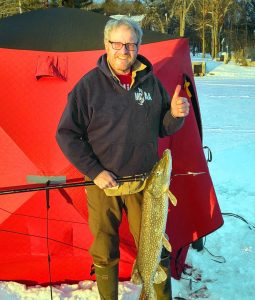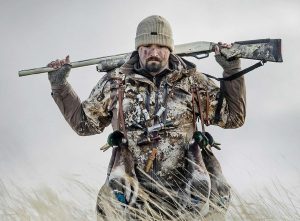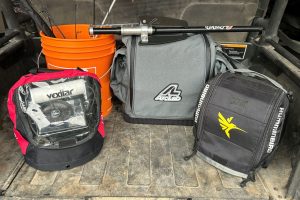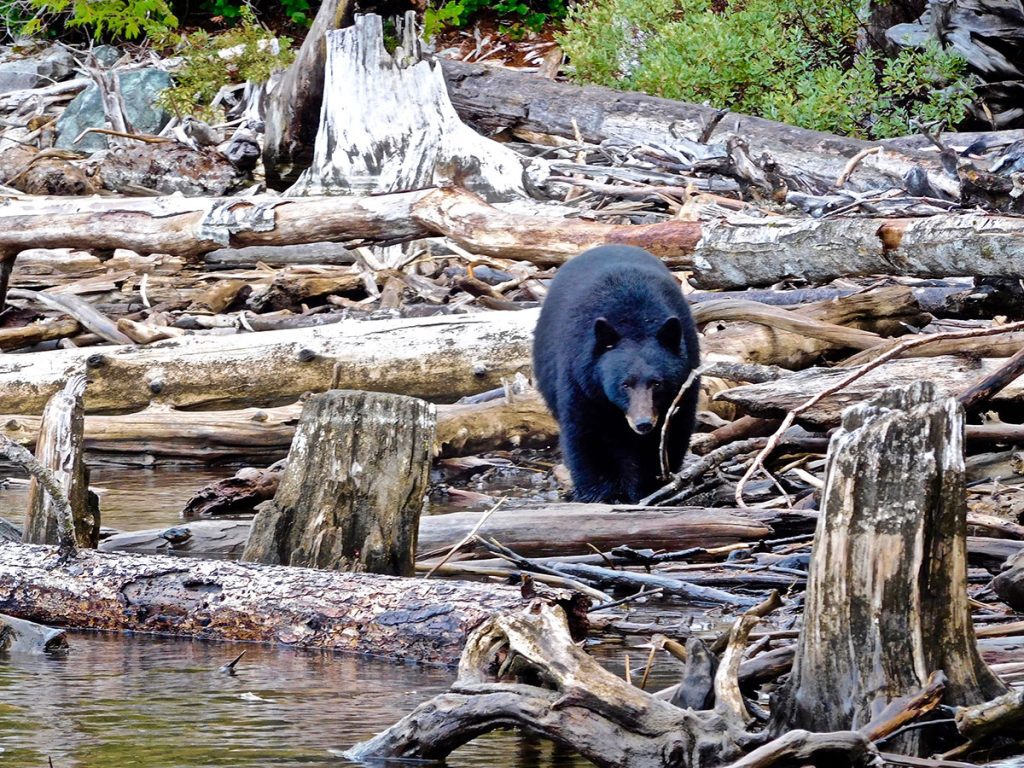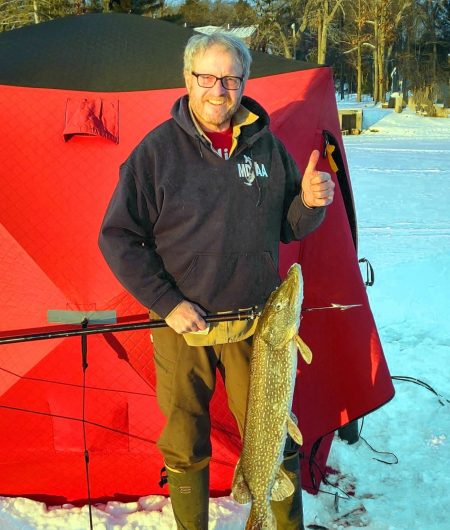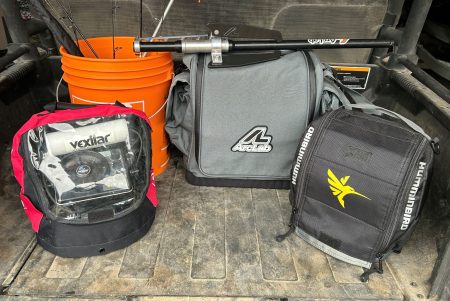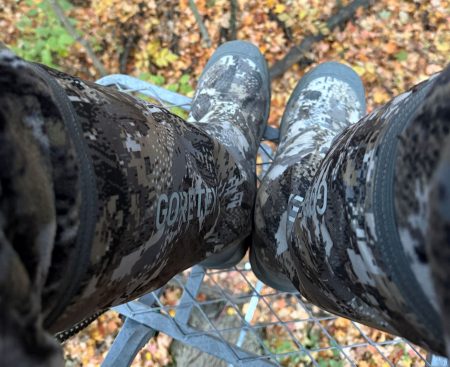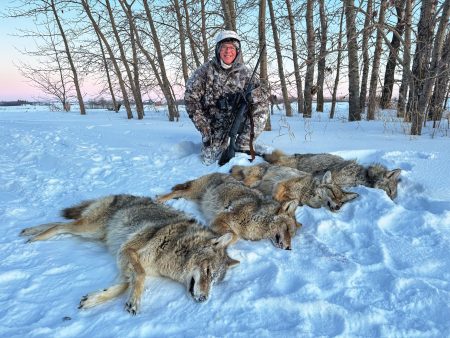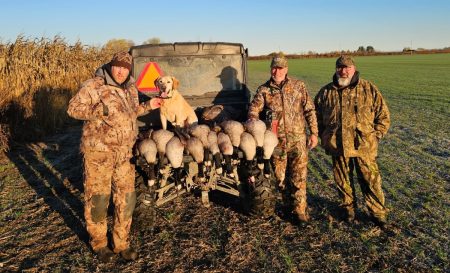“I don’t know, but I’ve been told, if you’re gonna hunt bear, you better be bold…..and use a big gun!”
“What did you just say?” Joe Polanco, my guide grinned as he walked out of the wall tent I would be sharing with Jerry Baker.
I glanced at Jerry. He was smiling. It was mostly because of him I was finally on my first Alaskan brown bear hunt. Jerry, a native Texan, had spent time in Anchorage where he had partnered in an accounting firm that worked with Alaska’s premier guides and outfitters including the Branham family. At the time of our hunt we both lived in Uvalde, Texas where we had become good friends. Jerry’s stories about hunting our biggest bears, plus my having long read about hunting them had me wanting to pursue our biggest predator. During those years, back when, I served on staff with “North American Hunter”, “Shooting Times’, “Handgunning”, plus numerous others. Through Jerry’s help I had booked with the Branhams to hunt the Alaskan Peninsula south of Lake Iliamna.
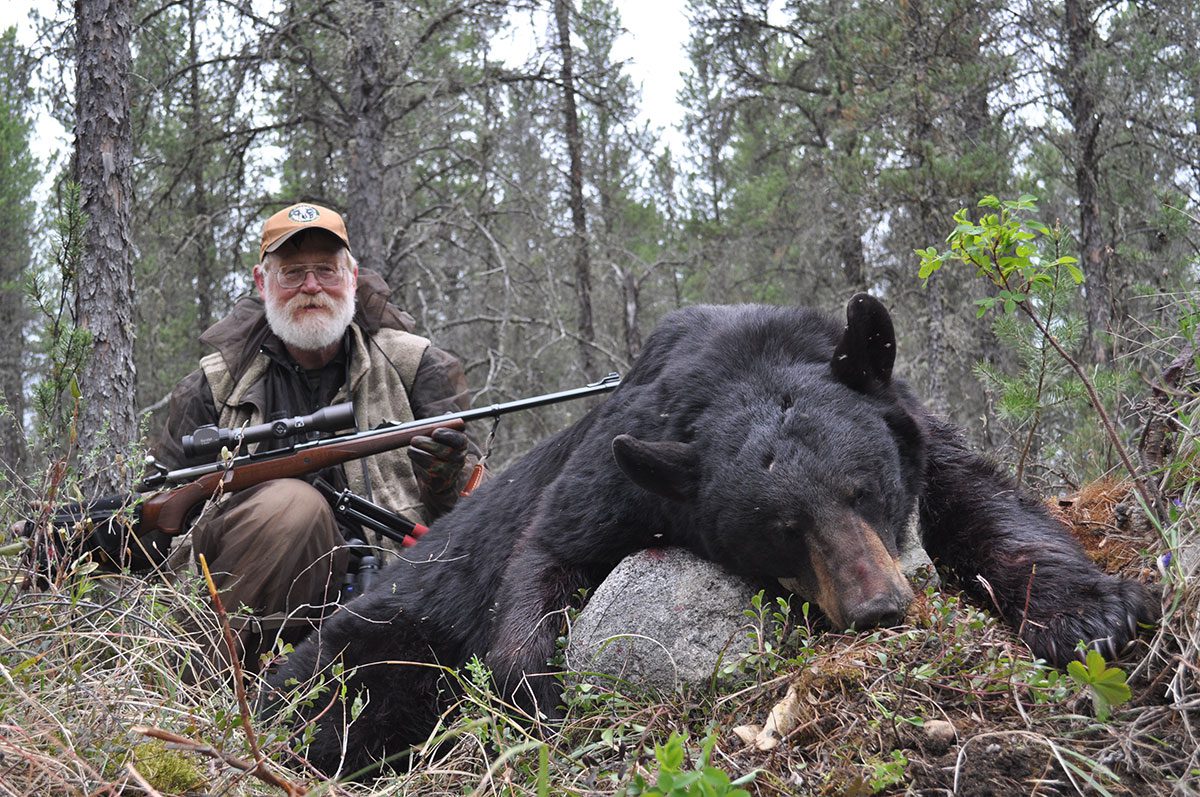
A moment later Joe stuck his head back into my tent, “We’ll check your handgun and rifle in a few minutes. Soon as you get your gear stowed, head over to the cook tent. I’ll set up a target, at 25 and 75-yards.” I intended to hunt with my .454 Casull Freedom Arms revolver, but I had also brought a .338 Win Mag, a rifle I had carried on many hunting trips, but seldom used. I had learned early in my hunting and writing career it was always good to have a second appropriate, spare firearm in camp.
Hunting bears regardless of the species; black, grizzly or Alaskan brown most always comes down to close shots, as it should. Selecting a bear caliber and round, Robert Ruark book, “Use Enough Gun”, comes to mind. Big bears are tough and tenacious.
I fell in love with bear hunting a very long time ago. It started with stories told by my great grandfather about hunting black bear along the banks of the Colorado River in Texas back when back during the middle 1800’s Texas was home to substantial black bear populations. I knew some day I would hunt bear.
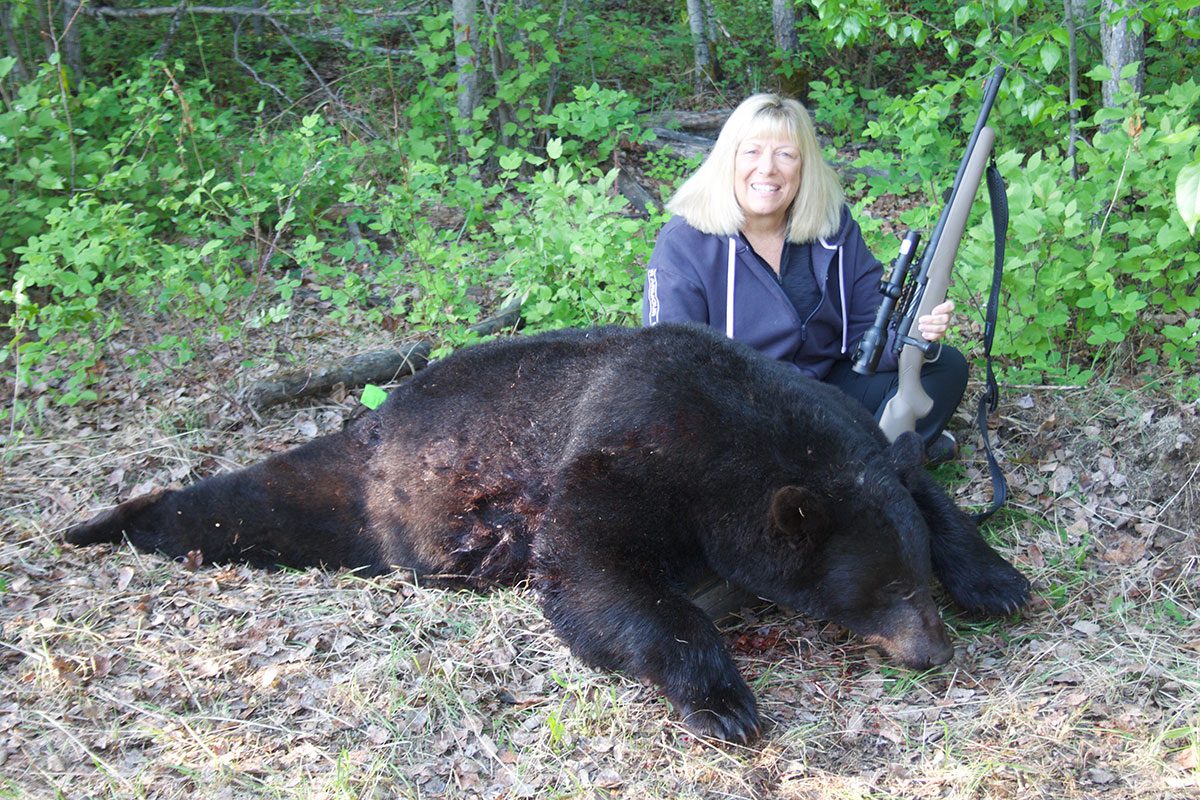
My first bear was taken in New Mexico back in the middle 1970’s. I used my .270 Win bolt action, shooting 130-grain Hornady ammo, to shoot a smallish, dark cinnamon-colored bear when it came to water at a remote pond not far from the Mescalero Apache Reservation. The bear dropped in its tracks. After years of dreaming about taking a bear I had finally done so. Since then I have hunted bear many places, times and ways.
Black bear can grow big, upwards of 500 or more pounds, although most average bears taken are around the 200-pounds mark, a really nice-sized bear. Their skin may not be overly thick but their muscles and bones are “dense”. If hunted during the spring they may not be overly fat, but hunted in the fall they can have thick layers of fat covering their body. Fat may not stop a bullet, but it can clog bullet holes, both entrance and exit. Fall bears after being shot may not leave a blood trail, or very much of one. One of the reason I like using larger calibers, even some of the best deer calibers. The bigger the hole the better the chance of a blood trail.
A bear’s anatomy is a bit different than deer and elk. Their heart and lungs tend to “sit” behind their shoulder as opposed to under the shoulder. Thus, shot placement through the vitals on a broadside bear should be behind the shoulder rather than on the shoulder.
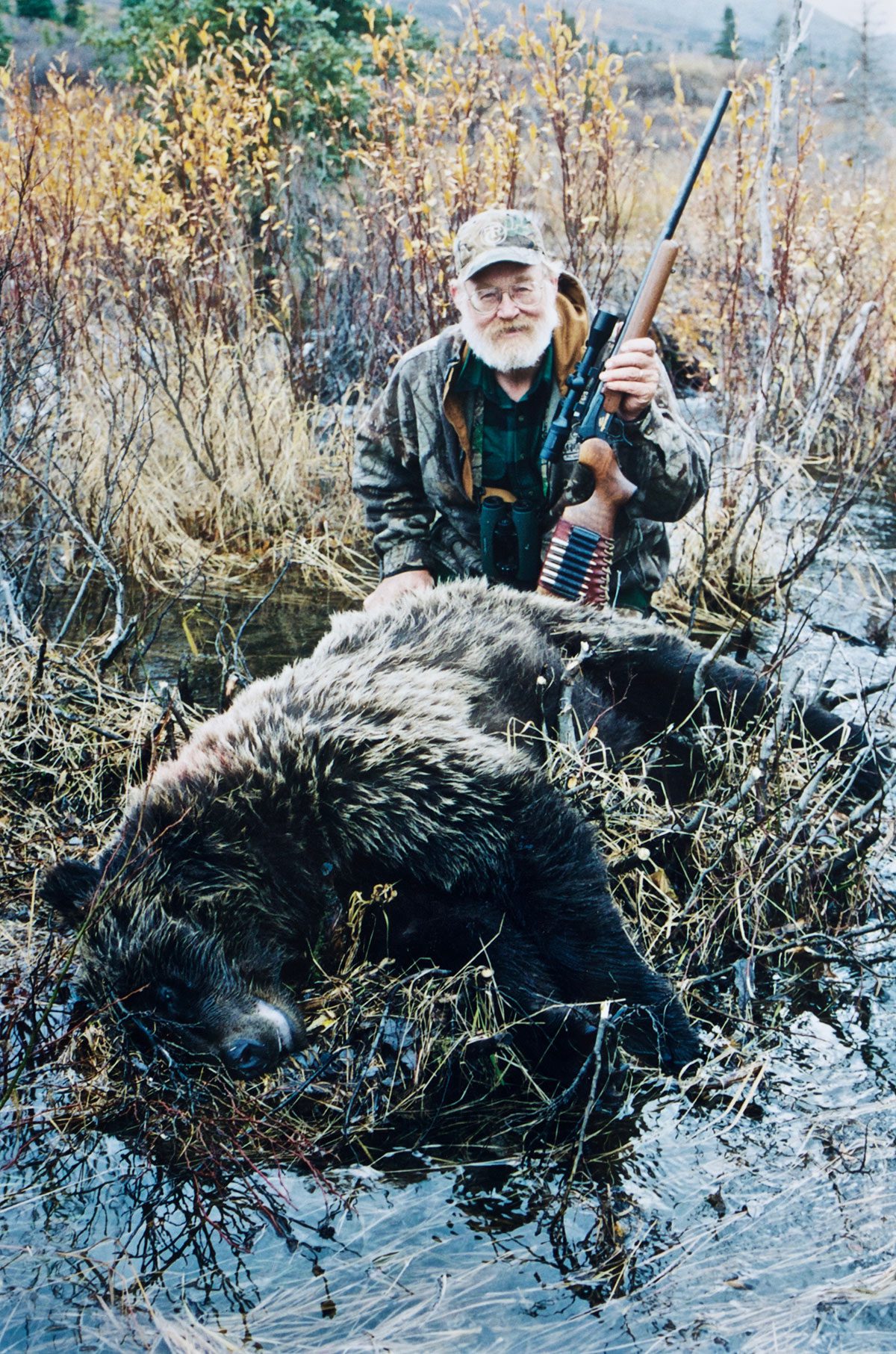
Very seldom do bears stand perfectly broadside for any length of time. If hunting over bait or spot and stalk, if one is patient such a shot will present itself. But, do not count on that happening. Before hunting bears, even if you have taken a bear or several in the past, learn where to place a bullet into a bear’s vitals no matter the bear’s position.
I have been fortunate to hunt black bear many times throughout North America with a guide and often do-it-yourself. When hunting with a guide I always ask, “Where do you want me to shoot the bear?” I have done this hunting black, grizzly and Alaskan brown bears. While there are a few guides who suggest shoulder shots, most recommend shooting the bear behind the shoulder, putting a hole through heart and lungs. Specifically, they suggested, “Shoot the middle of the middle!” In other words, cut the bear horizontally and vertically in half, then shoot where the two lines intersect. Good advice on a totally broadside bear, but in “real world” bear hunting learn about the position of the vitals when the bear is not standing broadside.
With black bear, anything that will quickly kill a 200-pound whitetail deer will also kill a black bear. Over the years I have used a wide variety of calibers and round including handguns in .44 Mag and .454 Casull; 12-gauge shotguns with slugs; muzzleloader loaders in .45 and .50; and rifles in .270 Win, 7×57, 7mm PRC, .308 Win, .30-06, .300 Win Mag, .300 H&H Mag, .338 Win Mag, .375 H&H Mag, .375 Ruger, .405 Win, .416 Rigby, .450 Marlin, .45-70 Gov, and .450-400 NE 3-inch.
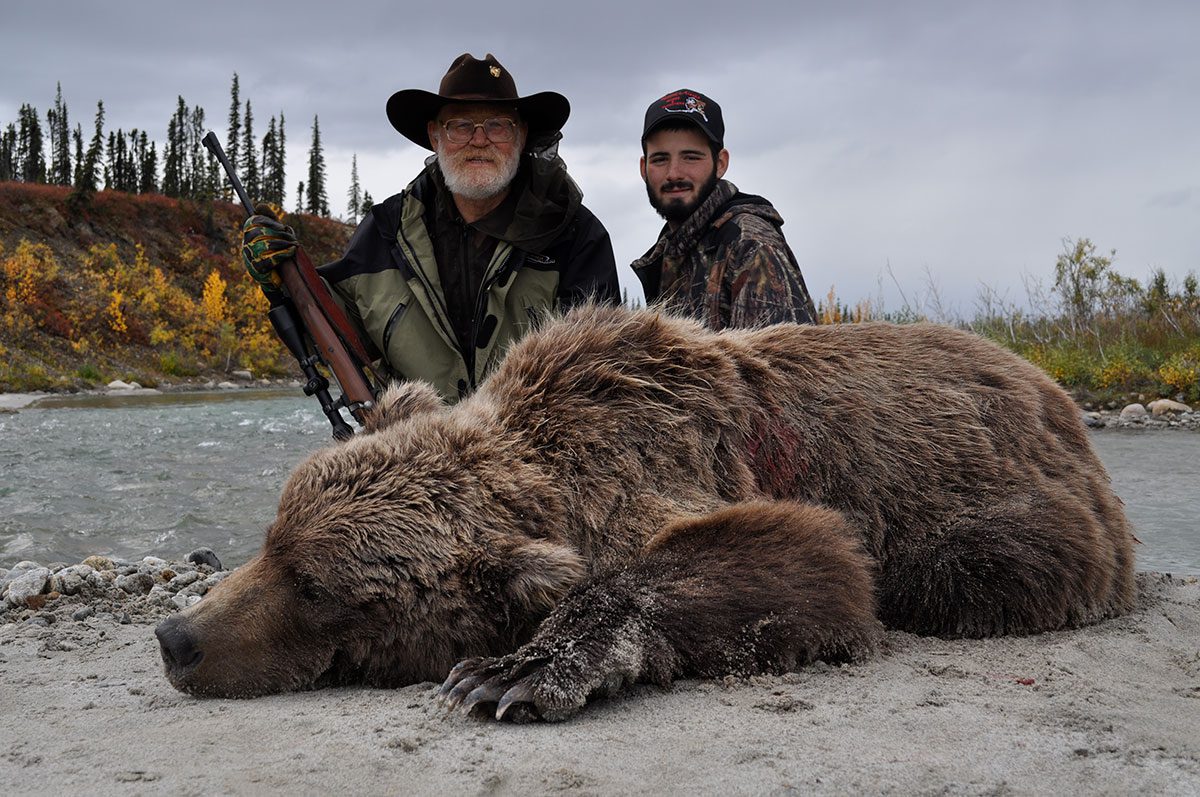
If there are some commons among the rifles I have used which include single-shots, lever and bolt actions, it is they are for the most part relatively short-barreled for ease of handling in thick cover. All were scoped with variables I could crank down to 2.5X, because of the closeness of most shots. Too, once I discovered scopes such as the Trijicon AccuPoint TR22 with the minimally lit reticle, I became convinced they were the best when it comes to hunt bears because of quick target acquisition but also quite frankly seeing black crosshairs against dark bodies, often under less than ideal light conditions, is always difficult and some times even impossible. Trijicon AccuPoint’s green or red dot allow for proper shot placement!
When it comes to the best black bear guns in my opinion, it is either a short barreled bolt action or a lever-action, but that said, I also like single-shots. One of the rifles I have used with great success on bears, which also includes grizzly and Alaskan brown bear is a Ruger M77 Guide Rifle chambered in .375 Ruger, topped with a Trijicon AccuPoint and shooting Hornady’s 300-grain DGX (Dangerous Game Expandable) ammo. The short 20-inch barrel provide great accuracy, but also allows for quick handling in thick cover or confined spaces. It also provides a quick follow up shots.
One of my other favorites is the .45-70 Gov Marlin (before Ruger) Guide Rifle. Shooting Hornady’s 300-grain Soft Point ammo my older Marlin is one of the most accurate rifles at 100-yards that I have ever owned. With it I have taken several really big black bear. Today it is owned by Jim Bequette, a dear friend who was long the editor of “Shooting Times”, including during the time I served on staff. Jim is the only person I would have let have that particular rifle!
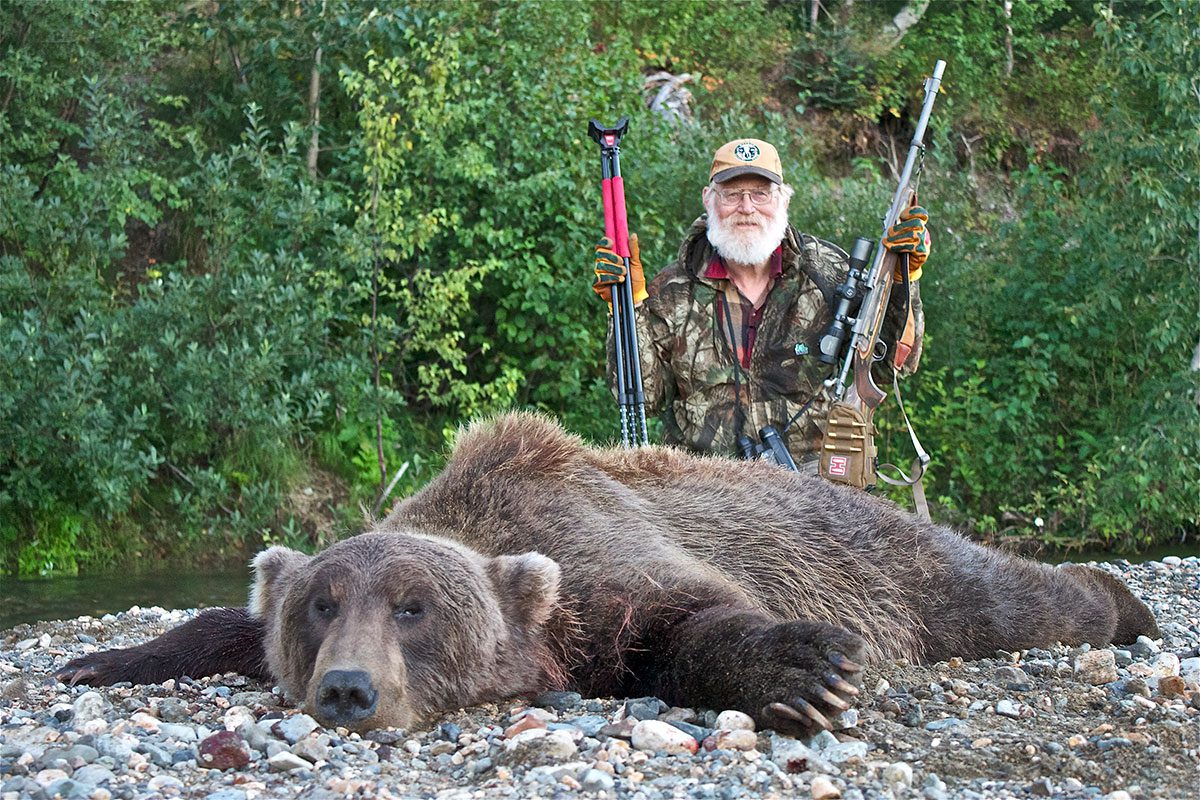
Best Black Bear Caliber
When it comes to single-shots I have taken numerous black bears with the T/C Encore in a variety of caliber and rounds. From a utilitarian perspective of quick-handling I really like the Encore rifle, but from a classy perspective, I prefer the Ruger No. 1. My favorite black bear rounds in those rifles are .375 H&H Mag and .450/400 NE 3inch.
Recently hunting with Mossberg’s Linda Powell with Mossberg we talked about her favorite black bear gun. Linda has always loved black bear hunting, and has taken many. She has also during her years of conducting media hunts, first for Remington and these days Mossberg, has been in camp when many black bears were taken. Asked her about her favorite black bear gun, she was quick to respond. “My current favorite is and has been for a while the Mossberg Patriot in .450 Bushmaster, with either a 16 or 20-inch barrel. That round is hard-hitting. The shorter barrels provide great accuracy and are really easy handling and quick pointing!” One of my next acquisitions will be a short-barreled Mossberg .450 Bushmaster.
I have been fortunate to hunt grizzly bears in the interior of Alaska three different times. Frankly, that by no way makes me an authority when it comes to guns for grizzly bear.
That said, my three grizzlies were taken in the last 30-minutes of each of those hunts. My first was taken with a .375 H&H Mag T/C Encore single-shot shooting Hornady 270-grain Interlock SP-RP. I shot the bear at a little over 100-yards. Shot through the heart and lungs it dropped immediately, then fell into the back side of a beaver dam into waist deep water. I could not have been more thrilled, other than the wet recovery!
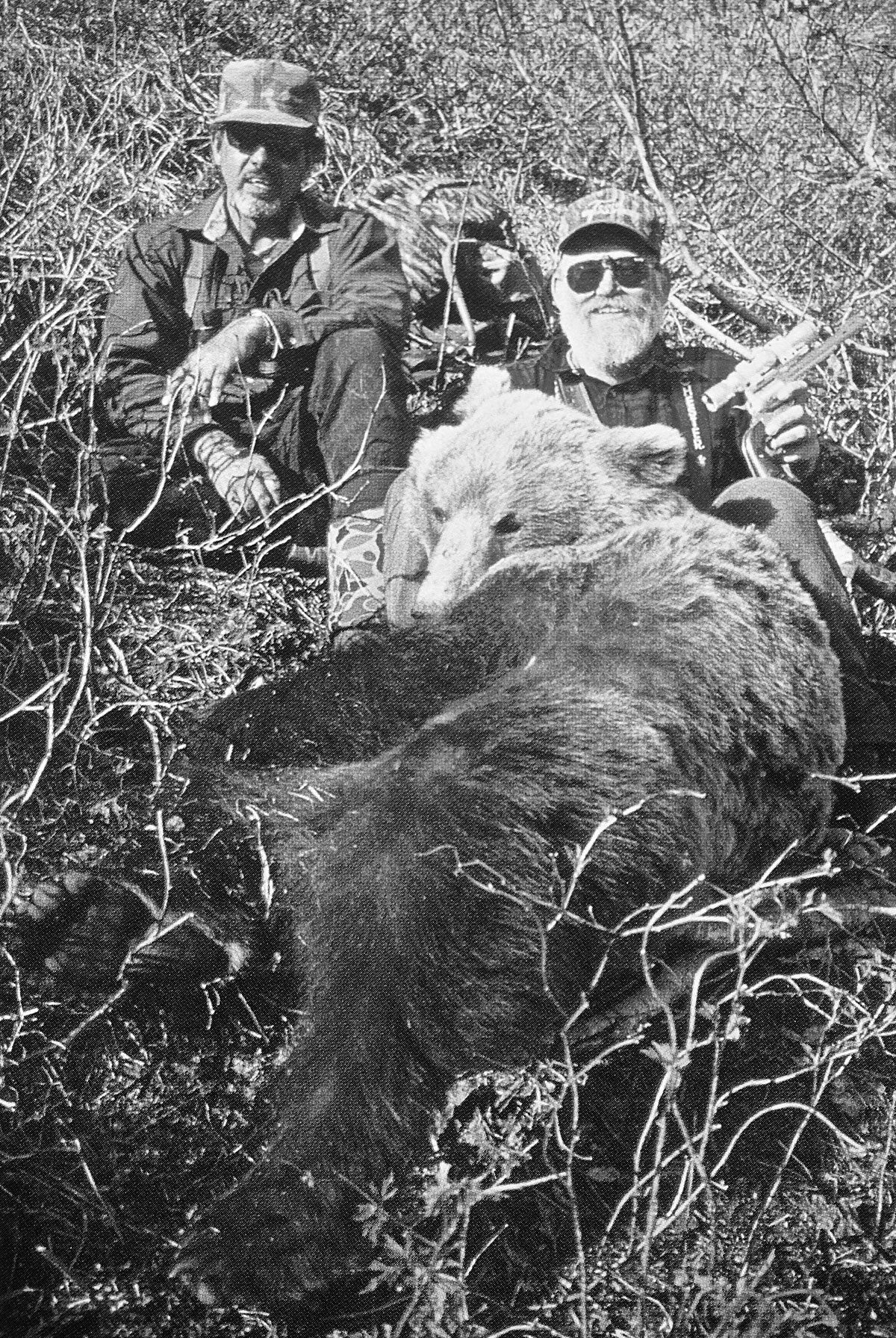
Inland grizzlies normally do not grow huge bodies compared to the coastal grizzlies, also known as Alaskan brown bear. My first and second grizzlies were smaller bodied than numerous of my bigger black bears. Both weighed, estimated, around 300-pounds. They squared a bit over 7-feet. Based on the annuli in their teeth Alaska’s biologist declared both 8-years old.
My first grizzly, I was hunting bear after having taken two really nice caribou. Grizzlies were following the migratory herd. One morning very early we had 4 grizzlies within 50-yards of our tent. Technically they were a sow with cubs, even though the cubs were bigger than the sow! One was a very dark brown, one a blonde, another a gorgeous silver-tip and the fourth a Toklot, meaning dark legs with blond sides. They were absolutely stunningly beautiful! I badly wanted to take the silver-tip, but could not do so because as mentioned the group was technically a sow with her cubs.
My second grizzly came hunting with Buck Bowdens’s Hidden Alaskan Guides on a moose hunt, but I had also bought a grizzly tag. We found only immature bull moose, but lots of grizzly tracks. We reached the end of our float trip to set up camp to wait for the planes to arrive the following day. When we beached the boat I spotted a grizzly staring at us through willows. Immediately he backed up and disappeared. I grabbed my Ruger M77 .300 RCM loaded with Hornady Interlock. The bear ran down river, I followed. He slowed after a half mile, then stopped and stood on a rock looking into the river. When he did, I put a bullet through his vitals. The bear pitched forward into the river.
I waded into the river grabbed the bear to keep him from washing down stream. About then the guide waded into the river and we pulled my grizzly to the bank.
This happened essentially after my hunt was over. As with my first grizzly it pays to never give up. The spent the night drying clothes and preparing the skin.
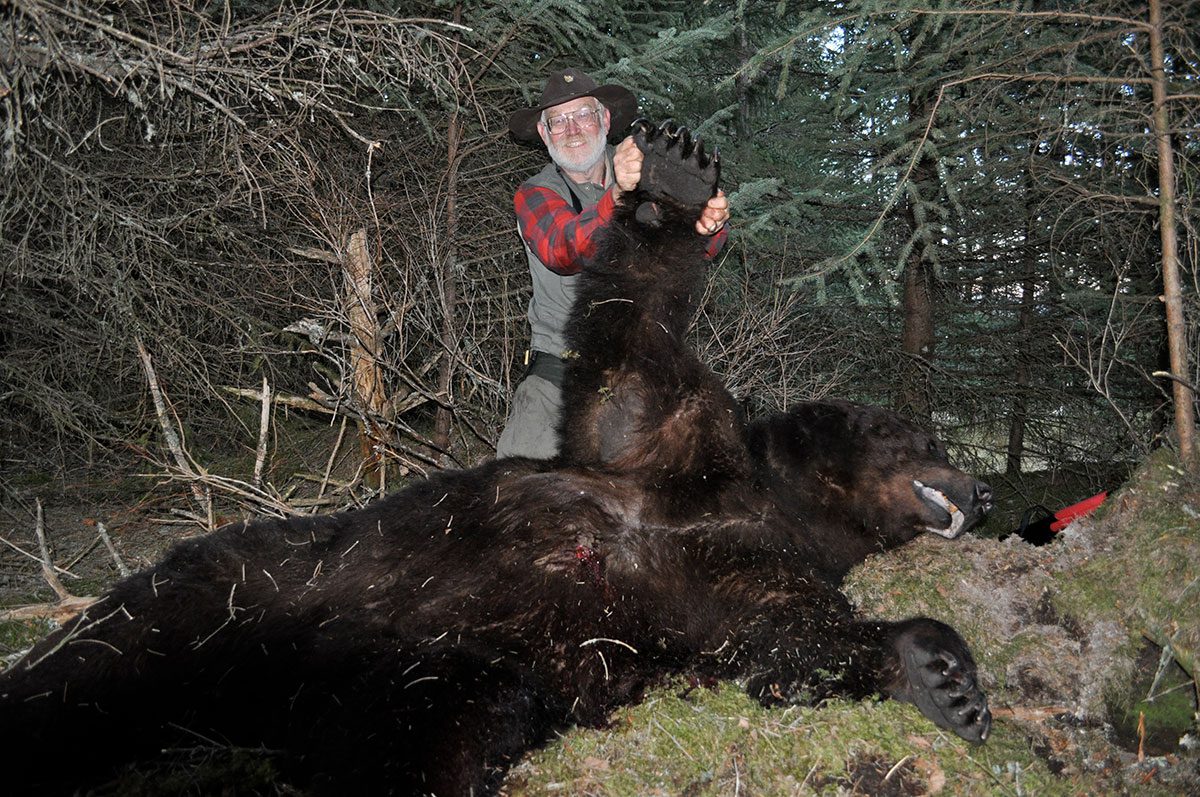
My third also came at the very last moment of my hunt. It was specifically for grizzly. After spending days not seeing any bears, other than the one we saw the same afternoon we landed the plane on a gravel bar to set up camp, it all came down to the last moments of the hunt. We had been wanting to hunt a particular stream, but the wind was always wrong. In the waning moments of the hunt, again with about 30-minutes left the wind switched. We literally ran the mouth of the stream. We had walked less than 50 yards into the canyon when we spotted a sizeable grizzly, less than fifty steps away. Immediately the old boar turned to face us. By his body position and expression, it looked as if he was thinking seriously about charging. I quickly set up shooting sticks, settled my .375 Ruger Guide Rifle in the crux of the sticks, found him in my scope, put the Triijicon’s green tridium dot on his vitals and shot. This happened a whole lot quicker than telling about it. The Hornady 300-grain DGX bullet hit the bear and dropped him in his tracks. Even so, I quickly bolted in a fresh round and watched for any movement. There was none. I was thrilled. He was a handsome older boar! The adventure did not end there. Remind me to sometime tell you about what happened after I had taken my grizzly. It got a bit “western”!
Best Grizzly Bear Caliber
All three of my grizzlies fell dead with one shot from a .375 H&H Mag, a .300 RCM and a .375 Ruger. The common dominator was Hornady ammo, and shot placement. In visiting with long-time grizzly guides, all recommended using at least a .30-06, several recommended a minimum of the .300 Mags, and several more suggested using .375 Magnums.
Having hunted dangerous game in Africa, Australia, South America and big bears in North America, I like big calibers. I mentioned the .375 Ruger using Hornady ammo. With it I have taken big bears, elephant, several different buffalo, hippo, and lion. Simply put that combination has never let me down. Were I again able to hunt grizzlies in Alaska, there is no doubt my rifle would be chambered in .375 Ruger.
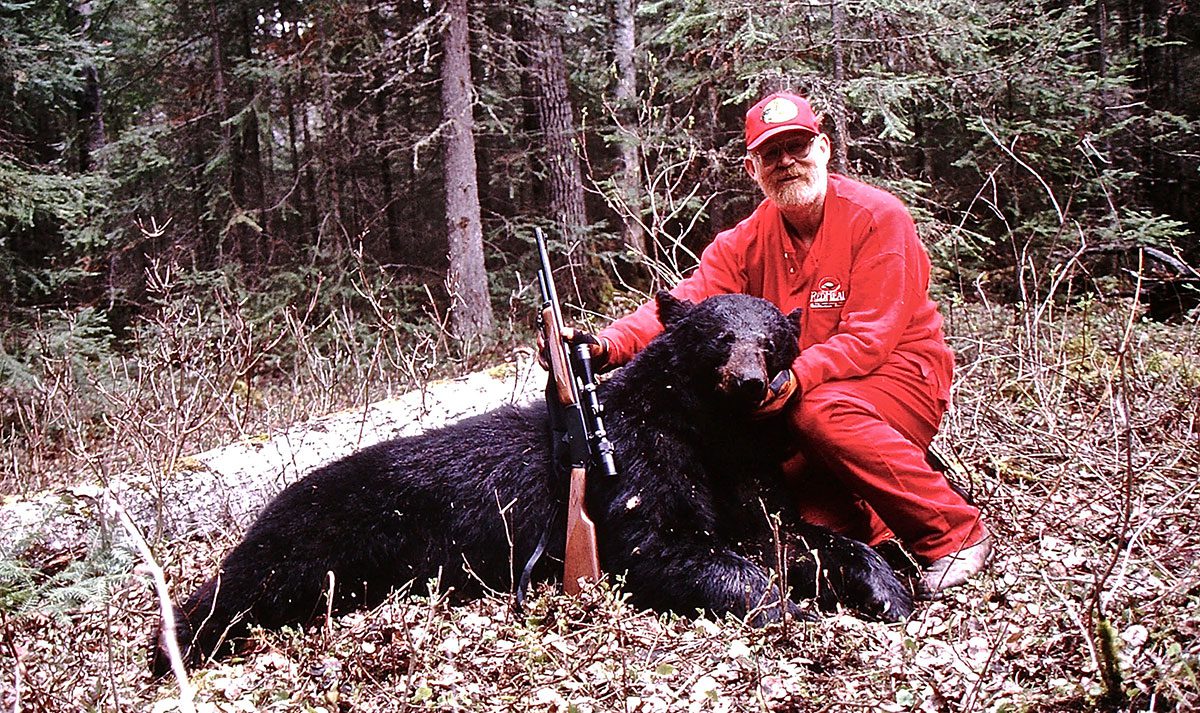
Big Alaskan brown bear, can and do weigh in excess of 1,000 pounds, huge no doubt. I started this addressing my first Alaskan brown bear hunt. To continue… After my guide set up targets at 25 and 50-yards I shot both my .454 Casull revolver loaded with Hornady 300-grain XTP Custom ammo, and my .338 Win Mag. The Casull cut the center out of the target at both 25 and 50-yards. One shot from the .338 Win Mag confirmed it was dead-on at 50-yards.
My opportunity at a bear finally came late in the hunt, one of the toughest, most strenuous hunts I have ever done including some grueling high mountain hunts. That winter before our spring hunt there had been very little snow. Bears usually living near water’s edge were at the tops of mountains. Every morning we started at sea level and crawled hand over hand up ridges where we could glass the distant higher slopes.
Long story short we stalked a bear for over 6 hours, having to go up and down steep slopes, dealing with canyon sides that gave way causing us to slide downhill, then start back up. Thankfully the bear continued feeding on a steep slope. On our final approach we had to cross a chest-deep icy stream, then crawling up hill some more. When we cut the distance to 75-yards totally exhausted, I could not go any farther. There I propped my pack on a boulder, rested the .454 Casull revolver on it, then pulled the trigger on the single-action revolver when the scope’s crosshairs were on the bear’s vitals. The bullet took the bear perfectly through the heart and lungs. It fell, rolled downhill one full revolution and was again back on its feet. I shot a second time and the bear dropped, 60 steps upslope.
I watched the bear for a full minute before starting the crawl to where it fell. I was so spent it took me 30-minutes to cover those 60 steps to get to where lay my bear. I was ecstatic. I had wanted to take an Alaskan brown bear for most all my life, a dream had come true!
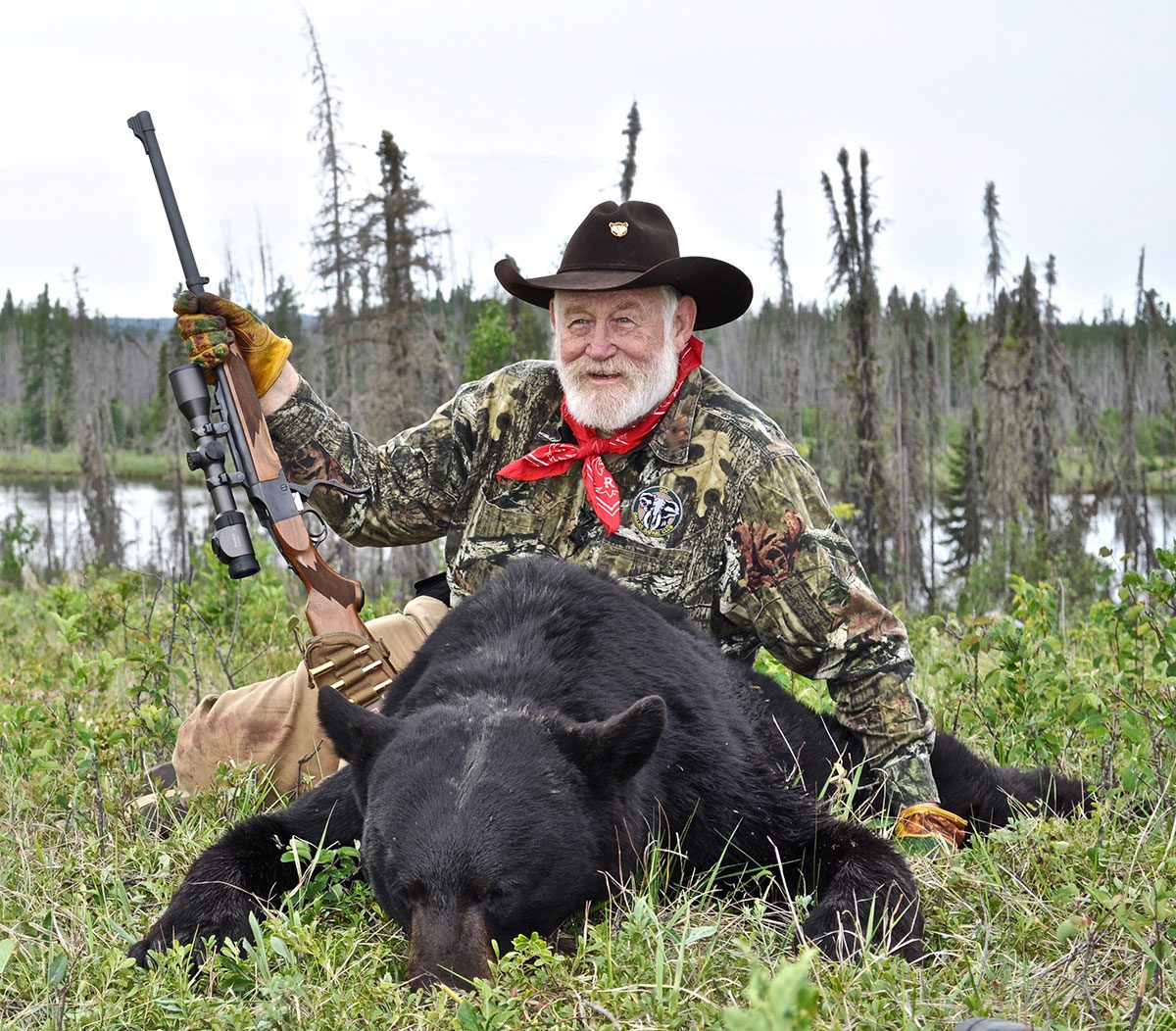
The .454 Casull and Hornady 300-grain XTP had done an admirable job, killing the bear quickly! Little did I know the adventure would continue and it would get even more “woolly” and exhausting trying to get back to camp, many miles away.
My second brown bear came a few years later. It started near the end of the annual DSC Convention and Outdoor Expo when I visited with Wayne Woods. Several friends and acquaintances had hunted with Wayne in the past. They had all taken 10-feet or better squared bears. Before leaving the convention floor I booked a trip with him.
The hunt was fabulous in many different ways. Half-way through the hunt we spotted a monster bear, eight miles away across a bay. Tides prevented us from going to immediately hunt the bear, a huge chocolate colored bear courting a blonde sow.
We spent several days in a “dry camp” trying to find the big chocolate brown bear. Finally, late one afternoon we spotted the boar pushing the sow toward us, at least a mile away. We ran down beach, got behind a spit of tree that hid our movement and where the tree stopped we planned to ambush the pair. At hundred and fifty yards the pair veered to their right. I glanced at Wayne. “Shoot him!” I did, hitting his vitals with a 300-grain Hornady DGX bullet from my .375 Ruger M77 Guide Rifle. Milliseconds later Wayne hit him as well with his .375 H&H. The bear started running. I shot him a second time, trying to get another bullet in him. Wayne did the same, just as the bear crawled up a 20-feet tall embankment. Then he was gone…
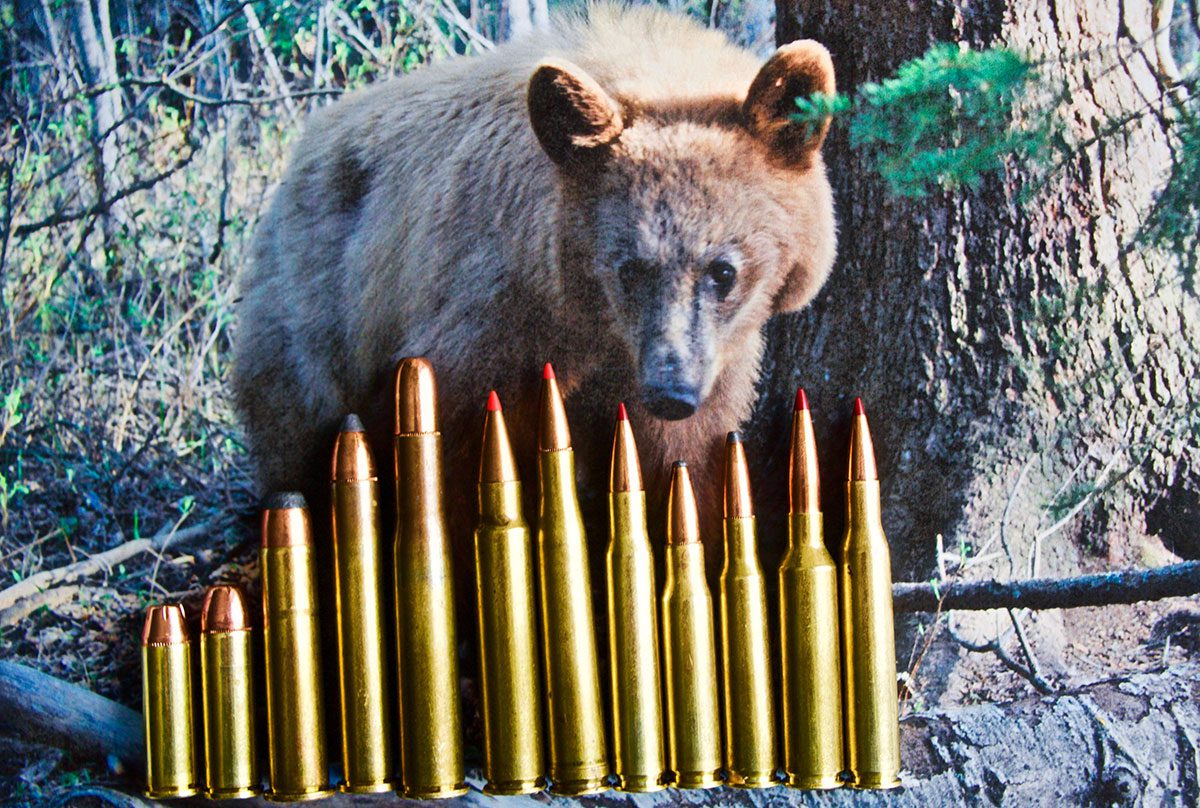
from left to right: .44 Mag, .454 Casull, .45-70 Gov., .405 Win, 450/400 NE 3inch, .300 H&H Mag, .30-06, .308 Win, 7×57, 7mm PRC, and .270 Mag
After confirming we had indeed hit him, evidenced by a blood trail. Wayne and I reloaded, then crawled up the embankment and on hands and knees started following the blood trail. He stayed on the top of the embankment, leaving a decent blood trail. We cautiously followed at a snail’s pace fully expecting a charge. He kept moving. Finally, we spotted hair waving just above a huge log. Not knowing whether he was alive or dead we waited for him to charge, from a arm’s length distance…in other words we both said prayers the bear was dead. After ten minutes of us watching and expecting a charge, Wayne tossed a stick over the log. The bear did not move. He tossed another, again no movement. That is when we eased back and circled the log. There we found my dead bear. He had died facing his backtrail…
Again, I am far from an authority when it comes to recommending rifles and calibers when it comes to hunting Alaskan brown bear. There are however a couple of things I have learned. Using a big caliber is important, and, having a short barrel and shorter overall length rifle when crawling through thick underbrush after a thousand-pound plus bear in thick is a whole lot better than having a long-barreled rifle.
Best Brown Bear Caliber
I dearly hope to someday again hunt Alaska’s biggest bears. When I do it will again be a .375 Ruger, loaded with Hornady’s 300-grain DGX, Dangerous Game! Based on my experience with that round on dangerous game around the world, I cannot think of a better choice! Matter of fact that same hold true for any of the other bears we are blessed to have North America call home!
Per our affiliate disclosure, we may earn revenue from the products available on this page. To learn more about how we test gear, click here.

